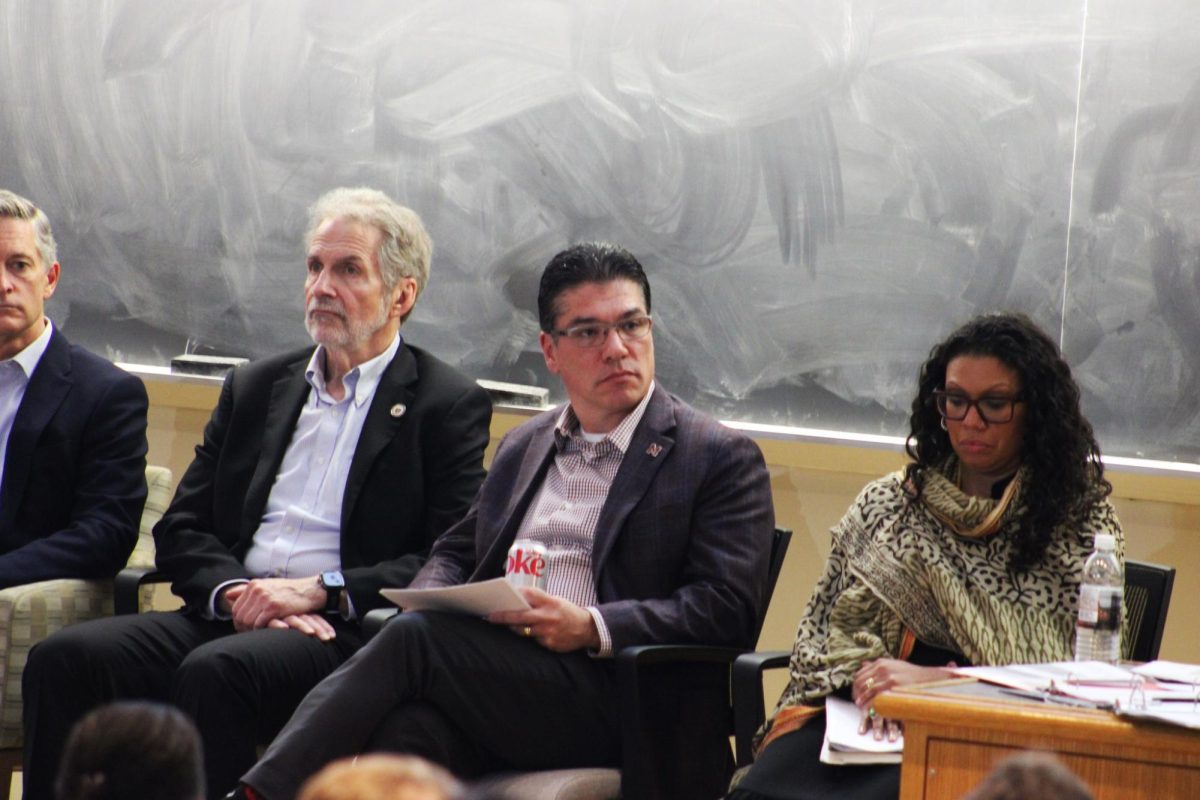“Everybody knows somebody” is the National Eating Disorder Association’s slogan for National Eating Disorders Awareness week, which ran earlier this month. It’s a slogan that rings true for students as one in five college students are said to suffer from some type of an eating disorder, according to eating disorder service provider Walden Behavioral Care.
Jennifer Smith, director of outpatient therapy at the Walden behavioral clinic in Northampton, said the clinic moved to this area to accommodate the needs of the students in the surrounding colleges.
Smith said eating disorders could be massively prevalent among college students because of the stress of transitioning from high school to college.
Eating disorders often begin as a way for people to manage the effects of low self-esteem, according to Smith.
“It’s an illusion [of] a sense of control,” she said.
Eating disorders have the highest mortality rate out of any mental illness, according to Smith, and suicide rates among those suffering from eating disorders are approximately 75 percent higher than that of the general population.
“It’s not a diet,” Smith said. “It’s a mental illness, and it’s very serious.”
Jenna Gagnon, a freshman at Mount Holyoke College knows how serious eating disorders can be. Gagnon has not only lost a family member to anorexia, but has struggled with an eating disorder herself for about five years.
Gagnon has been diagnosed with “Eating Disorder Not Otherwise Specified,” which is the most common categorization of eating disorders.
For Gagnon, her struggles with an eating disorder started in fifth grade when a young male classmate called her fat. She then began to experience self-hating thoughts and by the time she entered seventh grade, she began fooling her parents into thinking she was eating when she really was not. Breakfast for her was half an English muffin and lunch an apple. Dinner was typically a normal serving of food, but less as if she had eaten a lot that day.
After a few months of this diet, she got thinner and began receiving compliments, such as “you’re so pretty, I can see your hip bones,” she says.
Compliments about her weight only reinforced Gagnon’s perception that her rapid weight loss was a positive course of action. Gagnon began a tumultuous fluctuation of binging and purging by the age of 13. She binged and purged at school, often lying to friends about throwing up in the bathroom. She kept a food diary and counted calories.
She said the emotional stress of losing both of her grandparents to cancer perpetuated her eating disorder.
Around the age of 14, Gagnon sought help from a specialist on eating disorders. However, Gagnon said she wasn’t honest with the therapist about her eating patterns and “put on an act” to downplay her illness’ severity.
Gagnon said she was down to under 500 calories a day. The average moderately active female adolescent is supposed to consume around 2,000 calories per day, according to Harvard Medical School Family Health Guide.
Gagnon recalled how she began passing out in school. One time in health class, she fainted, slumping low in her chair, and other students believed she had fallen asleep.
The eating disorder consumed her life so much that she avoided going out with her friends and boyfriend.
“I really missed them and when I tried to hang out with them, all I could think about was food,” she said.
“I cut off myself from everyone,” she continued. “I realized how alone I was.”
“You don’t think that anybody notices, but they know.”
At age 16, she realized she needed help and went back to a specialist.
“Looking back, I looked terrible,” said Gagnon. “I was as pale as a ghost, you could see every vein in my body,” she said. “I was so undernourished … I wasn’t getting what I needed.”
By 17, Gagnon had recovered by a physician’s standard, but her thoughts about controlling her eating patterns and a negative perception of her body weight still circled her mind.
She said talking about the disorder with her friends really put into perspective how dangerous and harmful her eating disorder was to her health. She described worrying about the possibility of not being able to have kids in the future as a result of the physiological effects her eating disorder may have had on her body.
Gagnon said she was in denial for a while about whether she truly suffered from a full-blown eating disorder. She originally did not believe she was because she was not faced with death. She said society doesn’t take eating disorders seriously until death is a likely outcome.
Gagnon physical body is now healthy, but she said relapse is always a possibility.
“I don’t think you’re ever recovered,” she said. “There’s always that little voice in your head telling you that you shouldn’t eat something.”
William Walters, the help-line supervisor at NEDA said there are two official types of eating disorders: anorexia and bulimia. However, Walters also said there is a third category called Eating Disorder Not Otherwise Specified [EDNOS], which he said is anything that doesn’t fit in the official categories but is distressing and impairing to daily life. The most common of EDNOS is binge eating.
Gagnon was diagnosed with EDNOS, bulimia, anorexia and over exercising. A typical symptom of her disorders were for her to work out, pass out, then continue working out.
The most common demographic for the onset of an eating disorder are females age 15-17, according to Walters. However, he said eating disorders don’t discriminate; there are increasing numbers of men and women all different ages affected.
He said anorexia is common among high school students and bulimia is common among college students.
Walters spoke about media influence on young people.
“Stressing thinness as a value and stressing perfecting the body as a way to enhance our personal self worth is part of the formula for an eating disorder,” he said.
He said often when college-aged students go to the gym several times per week, it’s not usually for health or stress relief, but instead is almost always about losing weight for appearance.
Walters said when crash dieting, not only a person’s weight decreases but muscles and even organs shrink as well. He said major organs such as the heart and brain shrink as a result of some eating disorders.
He said bulimia can cause severe gastrointestinal damage and damage to the esophagus as a result of constant vomiting.
Walters said bulimia has a recovery rate of about 75 percent, and anorexia has a rate of 50 percent for partial recovery.
“A much larger number of anorexics never recover fully,” he said.
Walters said some people suffering from an eating disorder never get help for a variety of reasons. He said some don’t seek help because they’re afraid to speak up. Some don’t get help because they don’t have insurance or a job. Walters said some of those who don’t have a job are unemployed because of their mental health disorder, and it can be a vicious cycle.
Nancy Pierce can be reached at [email protected].


















